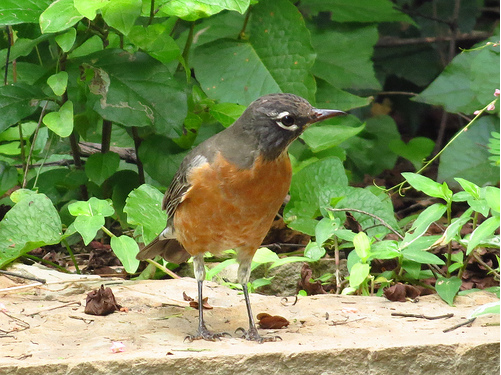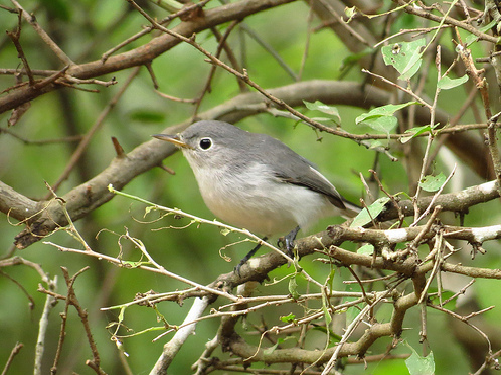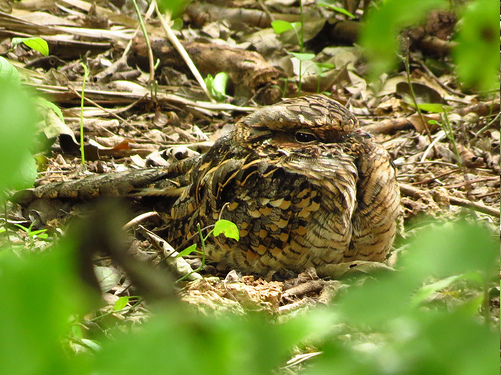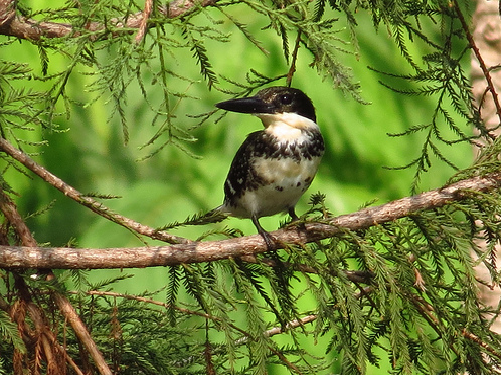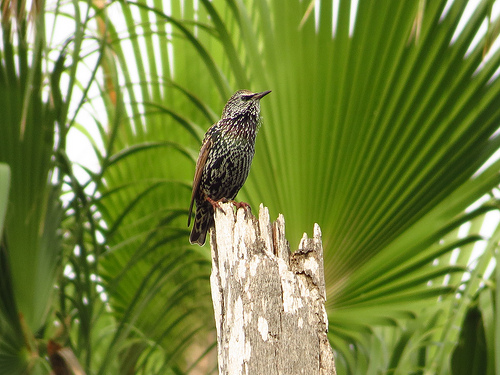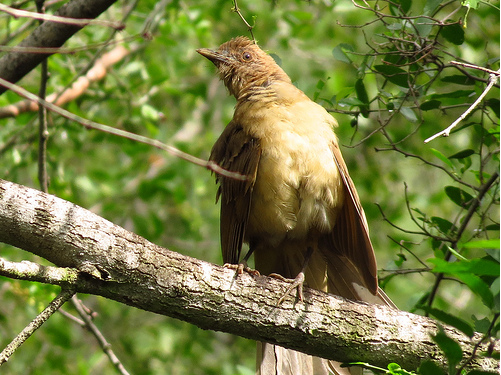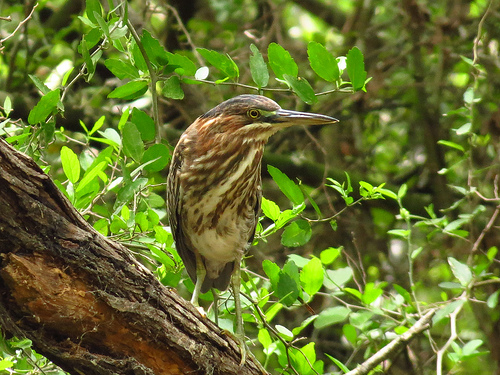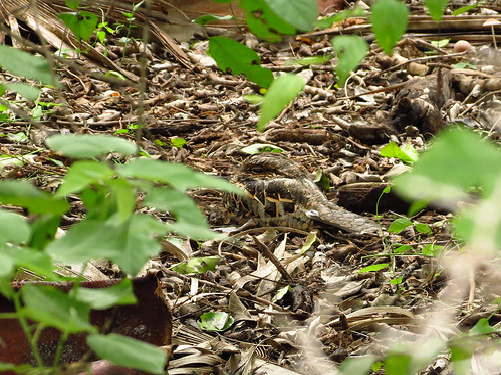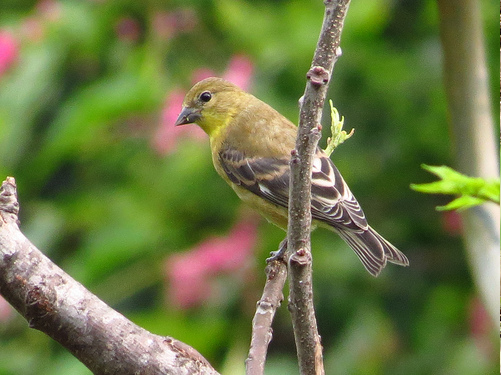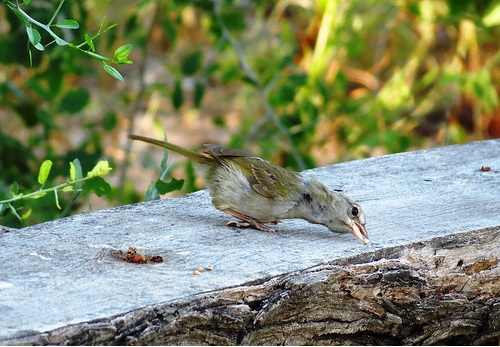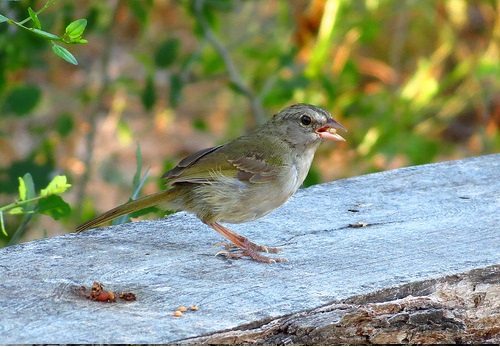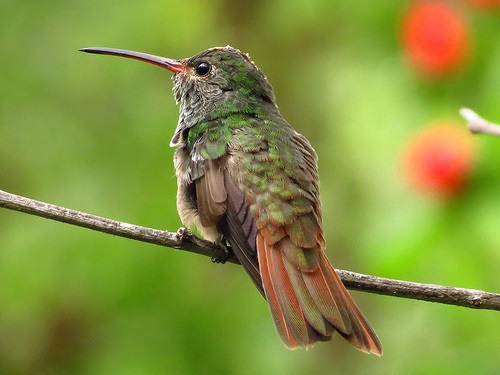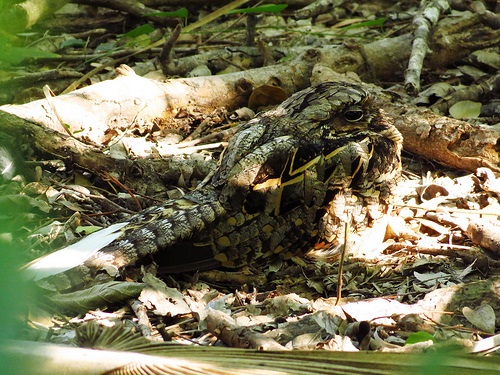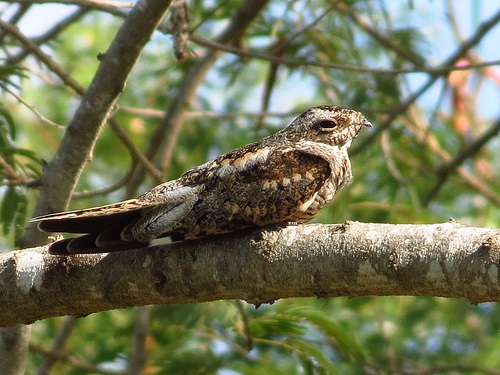Hello all, another beautiful fall day here at Quinta Mazatlan, with a nice mix of migrant and resident birds going about their feathery business.

“Say what now?” This Clay-colored Thrush, a younger bird given the mostly brown eye color (it shifts to deep red in older birds), peered curiously from its perch.
I started off by seeing the flock of Clay-colored Thrushes that inhabit the park. These birds were enjoying the fruits of an Anacua tree (Ehretia anacua). They are always fun to see, but especially fun to hear – their meow-like calls and subtle are always a welcome sound.
We also saw two of our resident Common Pauraques in their usual haunt. Perhaps it was just due to lighting, but the second individual (picture below) looked to have more gray in its plumage. According to Birds of North America “In Texas, upperparts of adult male brownish gray to tawny, mottled, spotted, and vermiculated with dusky brown, buff, and black.” Perhaps the difference was just variation in plumage, or perhaps it is related to age and sex.
My favorite bird of the day was this beautiful adult Gray Hawk. It flew into a palm, called loudly for a few minutes, and proceeded to fly to and call from the golf course next door. These raptors maintain small numbers in urban areas in the Lower Rio Grande Valley, and I have seen them regularly (albeit infrequently) in Quinta Mazatlan and south McAllen neighborhoods. What a classy South Texas Specialty Bird!
As always the full list of birds is below!
Regards,
John Brush
Black-bellied Whistling-Duck 40
Plain Chachalaca 10
Cooper’s Hawk 1
Inca Dove 5
White-tipped Dove 2
White-winged Dove 16
Common Pauraque 2
Chimney Swift 8
Ruby-throated Hummingbird 3
Buff-bellied Hummingbird 3
Golden-fronted Woodpecker 6
Great Kiskadee 4
Couch’s Kingbird 1
Green Jay 5
Barn Swallow 2
Black-crested Titmouse 3
House Wren 4
Blue-gray Gnatcatcher 6
Clay-colored Thrush 6
Curve-billed Thrasher 2
Long-billed Thrasher 2
Northern Mockingbird 8
European Starling 3
Orange-crowned Warbler 2
Common Yellowthroat 1
American Redstart 2
Yellow Warbler 1
Wilson’s Warbler 3
Olive Sparrow 3
Northern Cardinal 3
Indigo Bunting 6
Dickcissel 1
Great-tailed Grackle 12
House Sparrow 20















 This juvenile Buff-bellied Hummingbird is growing its tail. Those wings look so long without having a nearby tail!
This juvenile Buff-bellied Hummingbird is growing its tail. Those wings look so long without having a nearby tail!






























